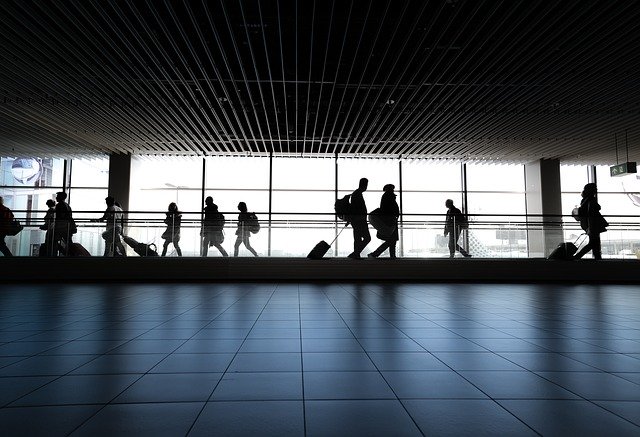
Travel Points 101 is a blog about using points and miles to travel as close to free as possible.
As always, I don’t believe in spending a lot of money on travel.
In fact, I really like to spend nothing at all.
This seems to be a controversial point, but I don’t think it is that complex.
People want credit card miles and points to get their next free trip.
In order to do this, you need to earn as many points and miles as possible.
Many people are just starting out in the “hobby” as it is known.
Others just want their next free trip.
I thought I would address the basics of earning points and miles, whether you are a beginner or advanced hacker used to free trips in international first class.
What are points and miles?
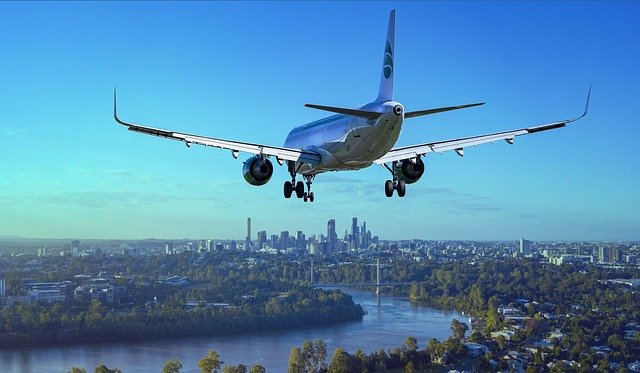
What are points and miles any way?
Points and miles are a type of currency.
The currency is issued by three broad groups:
- Credit card companies
- Airlines
- Hotels
Each group’s currency is different from its competitor’s currency.
So, you cannot transfer Marriott Bonvoy points to Hilton Honors points.
You cannot transfer Chase Ultimate Rewards to American Express Membership Rewards.
You cannot transfer Delta Skymiles to American Advantage miles.
Of the three groups, credit card currencies are best.
Credit card companies have portals where you can buy airline tickets or hotel stays much like using Expedia.
Instead of money, you use points.
You get the going rate for the ticket or hotel stay at the current competitive price.
I will explain later.
Here are sample programs from the three general groups I mentioned earlier:
- Delta Skymiles
- Hilton Honors Points
- American Airlines AAdvantage miles
- Marriott Bonvoy Points
- Chase Ultimate Rewards
- Citi Thank You Points
Although you cannot transfer airline miles to their competitor’s program, airlines have something called alliances.
Alliances are formed by airlines all over the world so that airlines can cover all regions of the world.
For instance, American Airlines has a partnership with British Airways.
In places that are hard to reach like certain international destinations, you can get to that place on a partner airline if the airline you fly does not go there.
So, you could book a flight with British Airways on the American Airlines website or vice versa.
This comes in handy when redeeming your miles.
Partner airlines can have some sweet spots in redeeming your miles that are a better deal..
For instance a flight on British Airways from New York to Chicago might cost less than if you booked the same flight on American Airlines.
In another example, you could spend less points by booking through Virgin Atlantic instead of it’s partner Delta.
How do you earn points and miles?

There are many ways to earn points and miles.
Here are the main ways:
- Credit card sign up bonuses
- Hotel credit cards
- Airline credit cards
- Using your credit card for everyday purchases
- Staying at a hotel
- Flying an airline
- Shopping online
- Dining out
- Misc.
1. Credit card sign up bonuses
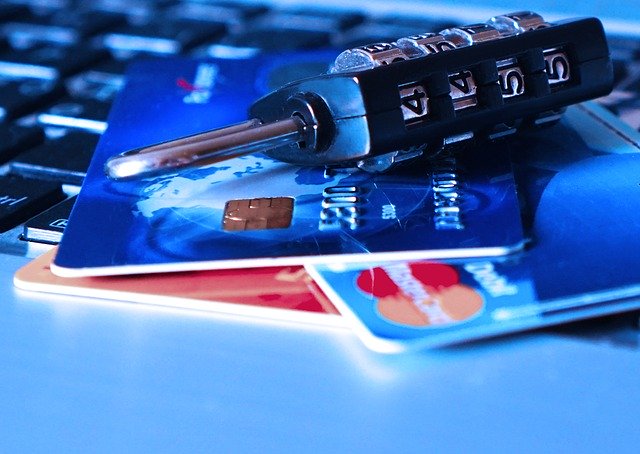
Credit card sign up bonuses are the number one way to earn points and miles.
You don’t even have to step foot on a plane to do this.
A card like the Chase Sapphire Preferred will get you 60,000 points for spending $4000 in three months.
That is worth $750 in free travel using current valuations.
So, just for getting a credit card, you would get $750 in free travel.
Of course, in the past, people took advantage of this and would open and close many cards.
Credit card companies now have rules to make sure people don’t get points and cancel the card.
I imagine they were losing money.
Though this sounds great, credit cards are not without negatives.
A lot of people fear credit cards today.
Credit cards get people in debt.
No worries.
If you use credit cards responsibly, you can beat the credit cards companies at their own game.
Credit card companies depend on interest to survive.
How do you beat the credit card companies at their own game?
Never carry a balance on a reward’s card.
That means you pay your balance in full each month.
You can read how to do that more here.
Basically, you put your normal expenses that you pay cash for on the card like groceries, gas, eating out, etc.
If you don’t have the cash for the purchase, you don’t put it on a reward credit card.
I usually like to pay this as soon as the charge hits the statement before the closing date.
If you carry a balance on these cards, you are not getting a free trip.
The interest would have you paying more than if you had paid cash for the trip.
Did you think credit card companies would give you all that free travel without a catch?
I hope I did not scare you away.
As long as you can pay your balance in full (on rewards cards), you can get your free travel.
I think this is pretty simple for people who read Travel Points 101.
You read the blog to save money on travel or to get your next free trip.
If this is a problem though, forget about reward credit cards.
2. Hotel credit cards

Hotel credit cards will earn you your next free stay quickly too.
Like regular credit cards, sign up bonuses on hotel credit cards are the easiest and quickest way to get some free hotel stays.
Many people don’t think of hotel credit cards, so although they are credit cards like others in my first point, I mentioned them separately.
I think you should get your main credit (non-hotel) cards first, but after that hotel credit cards are great for your next free hotel stay.
Next, hotel credit cards give you a certain amount of points for each stay.
After you have had every chain’s card (if they allow you to do that), hotel credit cards earn you extra points for the chain(s) you stay at frequently.
With credit card companies limiting the number of cards you can have like American Express and Chase and with there only being so many chains (i.e. Hilton, Hyatt, IHG, Marriott), you will need another way to earn free hotel stays after you exhaust hotel credit card sign ups bonuses.
So, hotel credit cards get you extra points for staying at hotels again.
For instance, the Hilton Aspire card will get you 14 points per dollar for each Hilton stay when you use the card.
You first get 10 points per dollar for each Hilton stay except Home 2 Suites and Tru (where you get 5 points per dollar) like I said earlier.
Then, you could get as much as up to another 10 points for elite status (Diamond members get 10 points per stay).
That is 34 points per dollar for each dollar spent if you have a hotel credit card and and Diamond status.
That is 5100 points for one stay for $150.
Do that a couple times, and you have your next free hotel stay.
So, if you had a 4 day stay, you could have 20,000 points which will get you a free hotel in a lot of places.
Of course, the sweet spot in the Hilton chain is 40,000 point hotels and points/cash.
You can do the math to see what is the best value.
A 20,000 hotel that you could pay little for with cash could be a better value with cash.
So, hotel credit cards get you more points for your stay.
Of course, the expensive $450 Aspire card is not for everyone, but even the no-fee Hilton card would get you 7 points per dollar.
The Aspire card gives automatic Diamond status too.
I think Gold is the sweet spot in the Hilton program if you want elite status anyway.
The Hilton Surpass card will give you Gold status just for having the card for a $95 fee.
This may not be for everyone either depending on whether you will get $95 in value out of the card.
The main thing about Hilton Gold status (the main benefit of the Surpass card) is free breakfast and upgrades to better rooms.
Basically, if you stay at Hilton hotels enough for the free breakfast to cover the $95 fee, then this is great.
If you have a family of four, free breakfast would quickly cover the $95 fee.
I have had Hilton Gold for five years.
This is through the Surpass card.
I would like to try Diamond for the first time later.
Many people say that Diamond gives only marginally better perks than Gold though.
You get the same free breakfast.
You can get Diamond status by having the Hilton Aspire card again.
Again, Hilton has a no-fee card if those two cards do not work for you.
You will get 7 points per dollar when using the card.
That would still be almost 20 points per dollar at Hilton when using the card (10 base points and 7 points for using the card).
American Express issues all Hilton cards.
They also issue Marriott cards along with Chase.
Some hotel cards by chains like Marriott, IHG, and Hyatt give you a free night each year for having their hotel card.
This more than covers the fee (usually around $95) of the card if you will stay at these chains anyway.
With my Marriott Premier card (now called Marriott Boundless) that I had for years, I came out getting a $150-$200 hotel each year by paying the $95 fee.
They cap the free night to certain categories, so you won’t get a $500 hotel for this.
So, I basically just got a discount on a hotel I would pay for anyway.
Like everything, these work for stays that were in your budget and that you would have paid for anyway.
3. Airline credit card
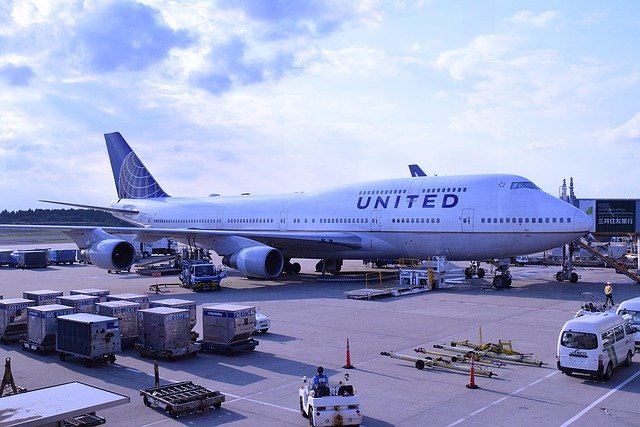
I mention airline credit cards separate for the same reason I mention hotel credit cards.
Many people don’t think of them.
Again, you should always get your general cards like the Chase Sapphire Preferred, American Express Green card, or Citi Premier first.
Because of the Chase 5/24 rule, you should get other Chase cards first too.
RELATED: What is the Chase 5/24 Rule?
Airline credit cards are great for getting free flights quickly too because of the sign up bonus.
A couple years ago, the sign up bonus on the American Express Delta card got me two free round trip tickets: one to Canada and the other to New York City.
I got the card when it had a higher sign up bonus and used Delta discounted miles.
I flew into Toronto and flew home from Montreal.
I bought a ticket for the flight between Toronto and Montreal at less than $100.
The flights were only around 7500 miles when the normal rate is over 12,000 each way.
If you had a business and got the 2 mid-tier personal and 2 mid-tier business American Airlines cards from both Citi and Barclay, you would get 200,000 American miles.
That is a lot of free travel.
Again, pay attention to each credit card issuer’s rules.
Unlike hotel credit cards, mid-range airline credit cards have a waived fee the first year.
You can then downgrade to the no-fee version close to when time to renew and not pay the fee if you will not get your money’s worth in the future.
If you check luggage, you should probably keep an airline credit card because one trip with two people would cover the $95 fee.
I personally like traveling carry on only though.
I know that might not make sense if you have a family.
4. Use your credit card for everyday spending

After sign up bonuses, putting your normal spending like groceries on your credit card is the next best way to get your next free trip.
Use your general cards like the Chase Sapphire Preferred.
Put all your purchases on the card.
This will build up each month
If you put $3000 in spending on a card like the Chase Preferred, you would at minimum earn 1 point per dollar.
That would be 3000 points per month or 36,000 points a year.
That is either more than enough for a free domestic flight or enough for a one way ticket to an international destination like Singapore or Paris.
The Chase Preferred gives 2 points per dollar on travel and eating out.
If you had the Freedom and Freedom Unlimited, that could be double your points.
When you maximize categories on each card, you earn more.
You never want to earn 1% if you can earn 5%.
How on earth do you put $3000 per month on a credit card?
You use your normal expenses like:
- Mortgage/rent
- groceries
- utilities
- cable
- internet
- cell phone
- childcare
- car insurance
- dining out
Most people’s normal expenses would be between $2000-$3000 a month or more.
To pay rent or mortgage on a credit card requires a fee.
Many of the companies who do this have many promotions where they waive the fee, so look out for this if you want to put mortgage or rent on your credit card.
5. Stay at a hotel

After credit cards, you can earn your points the old fashioned way.
Each time you stay at a hotel, you earn points.
This is actually not a bad idea.
Personally, I get rewarded frequently by hotel loyalty programs.
It requires that you spend money and have a budget, but I get free stays quite often.
I have had thirty free hotels in my five years in the hobby.
That is not as good as I could have done though.
Two of those years were when I traveled and stayed in fewer hotels than my normal fifty hotels a year.
All my friends say they have never seen anyone get this many free hotels.
If you keep reading Travel Points 101, people will say that to you too.
Again, I find hotel loyalty programs extremely rewarding.
They only reward you for your spend, but for trips you would take anyway, this is actually good.
I would suggest everyone have a budget.
My budget is $500 a month, or it is when we can travel again.
That is in addition to free flights and hotels.
That could sound like a lot to spend on travel depending on who you are talking too.
The catch is I don’t use any of my own money for this.
In the present, during a pandemic, I don’t need $500 a month so I use my Swagbuck’s money and other money I earn from cashback portals and other activities.
In the future, I plan to resell on Amazon.
You can check out my other blog AddingPennies.com for how to use Swagbucks and other things like cash back portals to put money in your pocket here.
Adding Pennies shows people how to put extra money in their pocket in many effortless ways.
This usually amounts to $100 or more extra a month.
Again, in the future, I plan to resell to cover my $500 monthly budget.
That will also generate extra points.
Some people resell just for the points.
This is popular with advanced travel hackers.
So, basically I spend nothing on travel.
RELATED: 22 Expenses In Your Budget To Cut To Have Money For Travel
Originally, when I first started, I had the idea that if you cut something like dining out, you would have money for travel.
I thought an amount around the average person’s dining out budget would be a good number.
The average person spends at least $300 on dining out.
Again, in the present I don’t even like spending that out of my own pocket.
Whether reselling or doing things like Swagbucks, for very little time, I will spend nothing on travel.
I like to travel frequently though.
In the past, I liked traveling once a month.
In the future, I would like to fly every week or every other week.
Maybe you will like to travel more frequently too.
However, if you just want two to three vacations a year, like the average person, that can easily be done on all points and miles though.
5. Take a flight
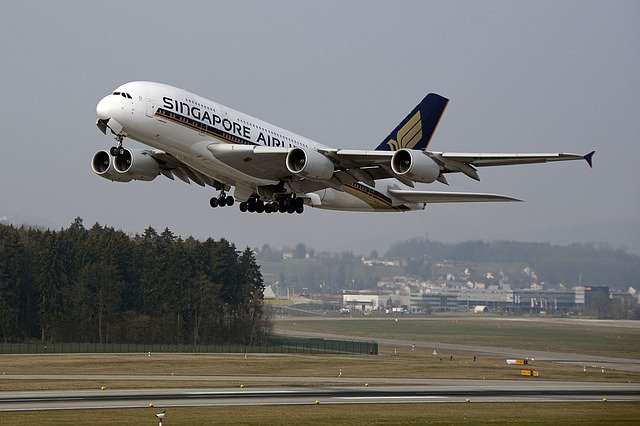
I don’t usually pay for flights.
I prefer points and miles.
Whenever you do, if you are signed up for the airline loyalty program, you can earn miles with each airline.
Most people earn all their airline miles without stepping foot on a plane.
Each time you fly, you will earn miles too though.
6. Shopping Portals

Airline and hotel shopping portals will earn you some serious points and miles.
Why not get points and miles for the shopping you would do anyway?
Shopping websites include airline and hotel portals or cashback sites like Rakuten.
In general, airline miles are worth more than cash, so if you see the same miles as cash ($1 vs 1 mile) , go for an airline portal.
There are times when a cashback portal will give you the best rate though.
Use cashbackmonitor.com to find the highest rate.
7. Airline dining programs

These programs don’t earn me as much as shopping portals.
Most of the restaurants that participate are local restaurants, so no big chains.
This can be limited depending on where you live.
Where I live only has four or five restaurants.
Of courses, places like Nashville or New York City will have hundreds of restaurants.
Dining programs still come in handy.
Since my city has few restaurants, I use these when on the highway.
I think the best thing about each hotel and airline dining program is the sign up bonus.
Usually in the beginning, they give you so many hotels and airline points for spending around $30 at a restaurant.
It is usually a big number in comparison to how much you will later get for meals, so make sure you get the sign ups.
Don’t sign up until you are ready to meet the requirements.
They only give you 30 days to complete.
I missed some of these when I started by just signing up without paying attention to the 30 day deadline.
I like having this blog, so you can learn from any of my mistakes.
The programs are owned by the same company, so you can’t use the same credit card with each program.
8. So many other ways
There are surveys, promotions, etc.
So, there are still many other ways to build up your points and miles.
In particular, always register for hotel and airline promotions.
These give you additional points and miles.
The big hotel chains like Hilton, Marriott, Hyatt, and IHG always do a promotion every quarter.
I sign up for all of the hotel promotions even though I don’t always use all of them.
For instance, the current Hilton promotion will give you 2000 points per stay in addition to all those other points mentioned earlier.
I recently started doing surveys with American Airlines.
For a couple of minutes a day, I earn around 2000 points a month for taking a survey a day for fifteen minutes.
That is 24,000 AA points or enough points for a free trip at the end of the year within the US, Canada, Mexico, and the Caribbean.
I will try to get to two surveys a day soon to double this.
Honestly, I don’t even notice the 15-20 minutes in my day for one survey.
Surveys can take time, so I think one to two or slightly more should be the limit each day.
How to determine how much your points are worth?
Although all currencies are grouped under points and miles, each loyalty program has their own currency.
All currencies are not equal.
For instance, Hilton points are worth .6 cents.
Marriott points are worth around .8 cents.
Delta Airlines are worth 1.2 cents.
American Airlines Miles are worth 1.8 cents.
This information comes from the Points Guy.
As you can see, airline miles are generally worth more than hotel points.
This is all important to know in redeeming your points.
Points are like money, you don’t want to spend more than you have to.
Transferable currencies
As we said earlier, out of the three general currencies (credit card, airline, and hotel), credit cards are usually the best currencies.
Credit card transfer to all hotel and airlines through their portals again.
In general, the transfer rate is a 1:1 ratio.
Basically, you pay the cost of the flight or hotel in points.
For instance, if a round trip ticket from New York City to London were $500, you would pay 50,000 points.
Some currencies get you a better value than this though.
They are called transferable currencies.
In addition to portals like the ones described above, they transfer directly to airlines.
Hence the name transferable currency.
Their portals even give a better rate than the normal 1:1 ratio.
For instance, if you have a Chase Ultimate card, you will get 1.25 or 1.5 instead of just 1 cent for your money.
Read our post on transferable currencies here.
The transferable currencies are:
- Chase Ultimate Rewards
- American Express Membership Points
- Citi Thank You Points
- Capital One Miles
You want to have one, if not all of these currencies first.
Those are the credit card transferable currencies.
The Marriott Bonvoy also transfers to airlines at a rate similar to these.
The other hotel chains have a very poor value if you transfer to airlines.
Airlines have a poor value of transferring to hotels too.
This means that though both airlines and hotels have portals where you can transfer to each other, they are generally a poor value.
In general, airline miles should be used for flights and hotel points should be used for hotel stays.
Summary
Getting started with points and miles is easy and fun.
Many people want to learn to use credit card rewards to get their first or next trip.
If you are new to this “hobby” as it is called, you may not know what points and miles are.
There is so much information to learn that even veterans can learn more.
I decided to write this post to give everyone a thorough understanding of what points and miles are and how they can be used.
I know this is extensive.
I hope it was helpful.
I will be adding a more extensive sign up guide soon that should tell you everything you need to know.
Most other guides have people needing many different resources.
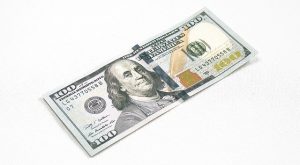


Love this post! Such a great post. I think a lot of people that don’t travel that often forget the tricks to paying less!
Thanks. I am glad it was informative.